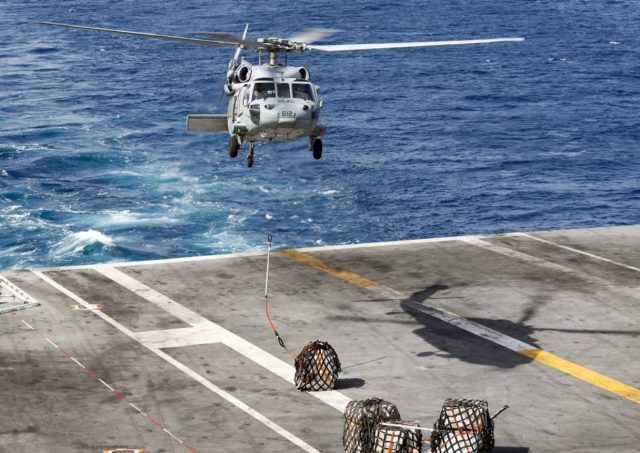The fatal crash of an MH-60S Seahawk helicopter aboard the aircraft carrier USS Abraham Lincoln (CVN 72) on August 31, 2021, which claimed the lives of five sailors, was caused by an in-flight failure of a damper hose.
According to a US Navy investigation into the incident, the failure resulted in total loss of the main rotor damping which led to severe vibrations upon touchdown.
As the vibrations intensified, the aircraft began a left yaw (rotation of the helicopter along the vertical axis) for approximately 50 degrees followed by a right yaw for approximately 200 degrees on the flight deck. The aircraft’s rotor blades impacted ABE’s flight deck, and the helicopter fell over the starboard side, tail first into the ocean.
The findings regarding the damping hose failure were made possible after the service recovered the crashed helicopter approximately 60 nautical miles off the coast of San Diego.
The investigation found that there is no evidence that pilot or aircrew error was a causal factor in the crash.
According to the navy, the loss of the helicopter came at a cost of $28.9 million, not including damages to two T-45 aircraft from Training Wing One that were on the flight deck at the time of the accident.
One of them incurred a hole in the canopy, with current estimated costs for repairs amounting to $186,733. The damage on the other airframe is more extensive and is estimated at $1.48 million.
According to the investigation, the damper hose failed in-flight due to mechanical damage (flattening) of steel braid strands. Kinking (bending) the hose crushed wire braids into each other causing flattening and nicking that resulted in fatigue failure of the steel braid strands.
The engineering investigation, conducted by the Fleet Support Team (FST), opined that the most likely cause of the damage was bending or kinking of the hose instead of disconnecting prior to using a spindle pry bar during rotor head maintenance. Failure of the steel braids is progressive, meaning additional damage continues to ensue with more flight time.
The navy said it was not possible to conclusively determine the timing or event that caused the damage due to many variables, one of which is that spindle pry bar use is not required to be documented. Additionally, records dating back to 2011 do not document a yellow damper hose replacement and the flattening likely happened due to a one-time event at some point.
Acting on the investigation’s findings, the navy released an H-60 Interim Support Equipment Change (ISEC) was released on December 7, 2021, directing the modification of the main rotor head spindle pry bar by adding a “hard stop” to ensure the spindle pry bar cannot be installed with the damper hose attached. 78% of all US Navy spindle pry bars have been inducted and completed to date, according to the service.
All of the documents released with the conclusion of the investigation are available here



























